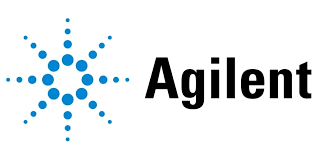Ai In Government
Published Date: 02 June 2025 | Report Code: ai-in-government
Ai In Government Market Size, Share, Industry Trends and Forecast to 2033
This report examines the AI in Government market across a decade, analyzing trends, market size, growth rates, and emerging technologies. It provides insights on segmentation, regional performance, and key challenges. The forecast period under review spans from 2024 through 2033, offering strategic perspectives for government digital transformation in detail professionally.
| Metric | Value |
|---|---|
| Study Period | 2024 - 2033 |
| 2024 Market Size | $5.40 Billion |
| CAGR (2024-2033) | 7.2% |
| 2033 Market Size | $10.28 Billion |
| Top Companies | GovTech Solutions, CivicAI Innovations |
| Last Modified Date | 02 June 2025 |
Ai In Government (2024 - 2033)
Ai In Government Market Overview
Customize Ai In Government market research report
- ✔ Get in-depth analysis of Ai In Government market size, growth, and forecasts.
- ✔ Understand Ai In Government's regional dynamics and industry-specific trends.
- ✔ Identify potential applications, end-user demand, and growth segments in Ai In Government
What is the Market Size & CAGR of Ai In Government market in 2024?
Ai In Government Industry Analysis
Ai In Government Market Segmentation and Scope
Tell us your focus area and get a customized research report.
Ai In Government Market Analysis Report by Region
Europe Ai In Government:
Europe is projected to grow from $1.37 billion to $2.61 billion, driven by strict data privacy laws and initiatives aimed at enhancing government transparency.Asia Pacific Ai In Government:
In Asia Pacific, the market is set to grow from $1.10 billion in 2024 to $2.09 billion by 2033, propelled by rapid digital transformation initiatives and strong government commitment to modernization.North America Ai In Government:
North America benefits from a robust technological ecosystem, with the market expected to rise from $2.03 billion to $3.87 billion, supported by innovation and proactive regulatory frameworks.South America Ai In Government:
In South America, the market is forecast to expand from $0.42 billion to $0.79 billion, reflecting gradual modernization efforts amid economic challenges.Middle East & Africa Ai In Government:
In the Middle East and Africa, targeted investments in digital government are expected to boost the market from $0.48 billion to $0.92 billion, despite the smaller scale.Tell us your focus area and get a customized research report.
Ai In Government Market Analysis By Use Case
Global AI in Government, By Use Case Market Analysis (2024 - 2033)
The by-use-case segment focuses on practical applications of AI in government such as efficiency improvement, enhanced transparency, and public safety. Governments are deploying AI to automate routine processes, optimize resource allocation, and improve decision-making. Efficiency improvements claim the largest share as they streamline bureaucratic functions, while enhanced transparency initiatives build accountability. Public safety benefits from real-time analytics, enabling faster response times. This segment demonstrates the tangible advantages of integrating AI into governmental operations, ultimately leading to more effective public services and a measurable impact on overall administrative efficiency.
Ai In Government Market Analysis By Technology
Global AI in Government, By Technology Market Analysis (2024 - 2033)
The by-technology segment examines the role of emerging AI tools such as machine learning, natural language processing, and computer vision in government applications. These technologies drive advanced data analytics, automate citizen interactions, and support predictive modeling. Their integration facilitates more informed decision-making and streamlines service delivery. The market consistently values these technologies for their ability to transform traditional government systems into agile, digital frameworks. As governments invest in upgrading legacy infrastructures, the role of these sophisticated AI solutions becomes increasingly critical in achieving modernization objectives and maintaining high operational standards.
Ai In Government Market Analysis By Challenge
Global AI in Government, By Challenges Market Analysis (2024 - 2033)
The by-challenge segment addresses hurdles such as bridging the skills gap, ensuring cybersecurity, and integrating AI with existing legacy systems. Governments face challenges in regulatory compliance and data privacy, which can slow adoption. Overcoming these obstacles requires significant investments in training, technology upgrades, and collaborative initiatives between public bodies and tech providers. This segment highlights the necessity of strategic planning to mitigate risks, ensuring that AI implementations are secure and effective. Successfully addressing these challenges is crucial for realizing the full potential of AI in transforming government operations.
Ai In Government Market Analysis By Benefit
Global AI in Government, By Benefits Market Analysis (2024 - 2033)
The by-benefit segment consolidates the positive impacts of AI adoption in government. Notable benefits include cost reduction, improved policy analysis, enhanced citizen services, and increased operational efficiency. These outcomes are achieved through streamlined processes and automated decision-making, which reduce administrative burdens and foster better resource management. The financial and operational gains underscore the transformative value of AI, making it instrumental in modernizing public sector functions. Overall, this segment captures how the benefits of AI drive strategic initiatives that lead to more responsive and effective governance.
Ai In Government Market Trends and Future Forecast
Tell us your focus area and get a customized research report.
Global Market Leaders and Top Companies in Ai In Government Industry
GovTech Solutions:
GovTech Solutions leads in developing integrated AI platforms that enhance government efficiency and transparency. Their innovative solutions streamline administrative functions and enable data-driven decision-making across public sectors.CivicAI Innovations:
CivicAI Innovations specializes in AI-driven public safety and citizen service technologies, offering advanced tools that improve responsiveness and optimize resource management for government agencies.We're grateful to work with incredible clients.









FAQs
What is the market size of ai In Government?
The AI in Government market is valued at $5.4 billion in 2024, with an expected CAGR of 7.2% through 2033. This growth reflects a strong commitment to integrating AI technologies into governmental operations globally.
What are the key market players or companies in this ai In Government industry?
The major players in the AI in Government sector include companies like IBM, Microsoft, Google, and Accenture. These firms are pivotal in advancing AI technologies, offering innovative solutions to enhance governmental efficiency and public services.
What are the primary factors driving the growth in the ai In Government industry?
Key drivers of growth in the AI in Government industry include the need for improved operational efficiency, enhanced transparency, cost reduction, and better citizen services. Adoption of advanced technologies is essential for modernizing government processes.
Which region is the fastest Growing in the ai In Government?
North America is the fastest-growing region in the AI in Government market, projected to grow from $2.03 billion in 2024 to $3.87 billion in 2033, driven by significant investments in technology and innovation by the government.
Does ConsaInsights provide customized market report data for the ai In Government industry?
Yes, ConsaInsights offers customized market report data tailored to the specific needs of clients within the AI in Government industry, ensuring access to relevant insights for strategic decision-making.
What deliverables can I expect from this ai In Government market research project?
From this AI in Government market research project, expect detailed reports highlighting market trends, regional data, segment analysis, and forecasts, providing a comprehensive overview of the industry's future landscape.
What are the market trends of ai In Government?
Current trends in the AI in Government market focus on efficiency improvements, transparency enhancements, and leveraging data for decision-making. Innovations in machine learning and natural language processing are also paving the way for advanced public services.
